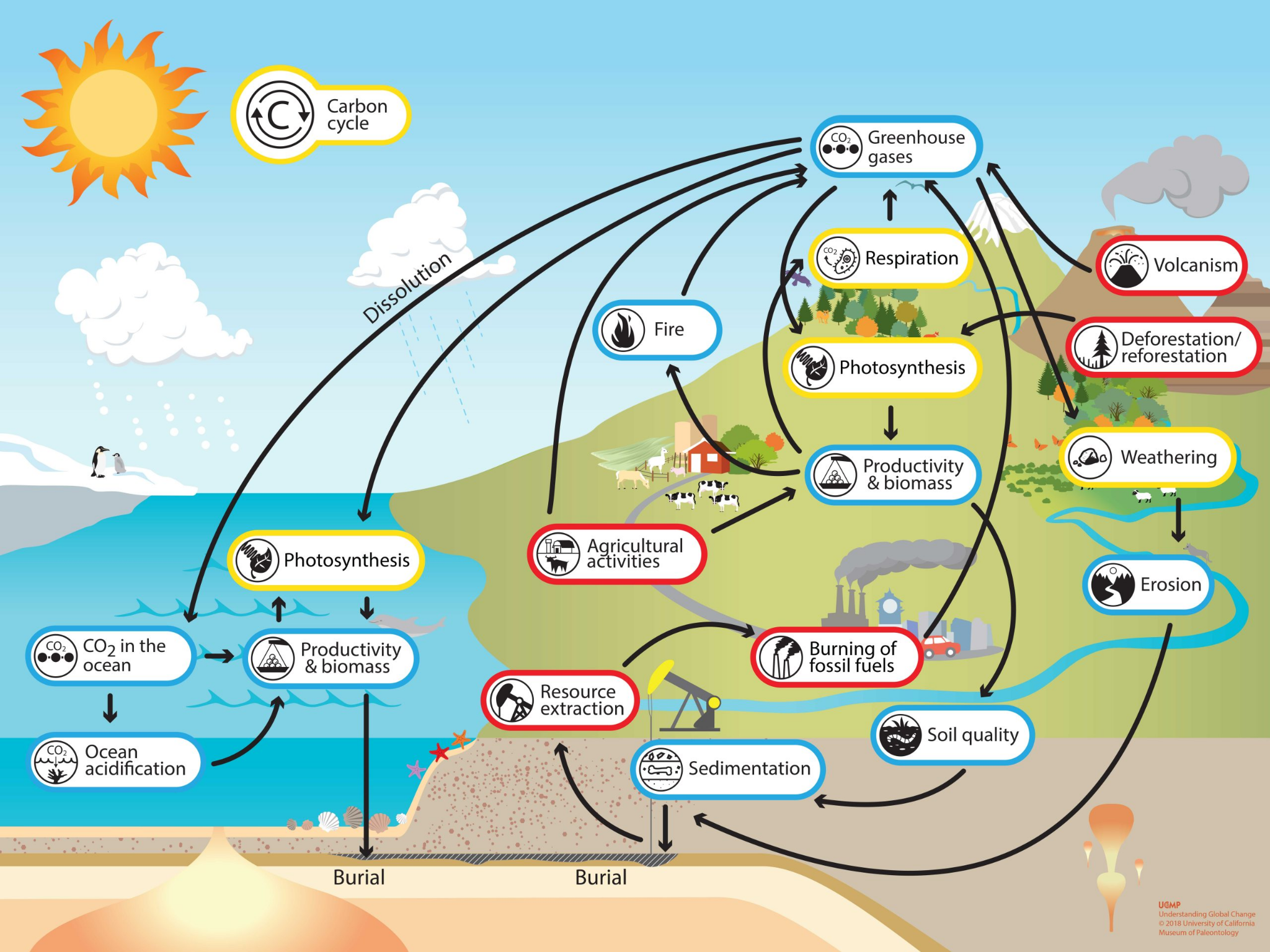Carbon (from Latin carbo means coal) is a chemical element with the symbol C and atomic number 6. Carbon is the foundation of life and carbon compounds form the backbone of all living organisms on Earth. Carbon is the building block that is required to form biomacromolecules such as carbohydrates, proteins, lipids, and nucleic acids9. The carbon cycle10 is a biogeochemical cycle. It describes the process through which carbon molecules travel from the atmosphere to terrestrial biomes and the ocean and then back to the atmosphere. For example, carbon is everywhere, in the rocks, living organisms, sediments in the ocean, and the atmosphere. In this manner, carbon constantly transfers between oceans, the soil, and the atmosphere over centuries. The five major carbon reservoirs are rock, atmosphere, oceans, terrestrial biosphere, and fossil fuels. Figure-211 explains the details about the carbon reservoirs and how carbon moves between them. So, carbon moves from one reservoir into another through a variety of mechanisms such as photosynthesis, respiration, ocean gas exchange, human activities, and so forth.

Figure 2: Carbon Cycle (adopted from Understanding Global Change, Copyright © 2016, UC Museum of Paleontology, ugc.berkeley.edu)
Plants fix carbon during the process of photosynthesis and make glucose which is sugar. When herbivores eat the plants, they use glucose and other organic molecules to produce energy through the process of cellular respiration. One of the by-products of this is CO2 which is breathed out during respiration. We can refer back to the Keeling Curve (Figure-1) and see the breathing of the planet. For example, due to the increase in primary productivity during the growing season, the plants and trees are taking in more CO2 and in the process leading to the lows in the summer. On the other hand, the decrease primary productivity along with cellular respiration leads to highs in the winter. When organisms die and decay some of the CO2 is released into the atmosphere and some of it becomes a part of the soil. When fossil fuels are burned huge amounts of CO2 are released into the atmosphere. Humans play a major role in the carbon cycle through activities such as the burning of fossil fuels, land development, and the destruction of trees. Therefore, the above-mentioned processes are referred to as the sources of CO2. Plants, trees, blue-green algae, and other photosynthetic organisms fix carbon through the process of photosynthesis and produce glucose and other sugars, and the chemical weathering of rock minerals removes the CO2. This is why these processes are referred to as sinks of CO2. Thus the movement of carbon in the form of CO2 could be traced from the atmosphere to plants, to herbivores, to carnivores, and back to into the atmosphere.
Other sources that result in adding CO2 to the atmosphere include forest fires, deforestation, volcanic eruptions, agricultural activities, burning of fossil fuels, and formation of CaCO3. Figure-2 explains the carbon cycle and the movement of carbon between the atmosphere, land, plants, animals, and the oceans. Human activity, especially the burning of fossil fuels, changing land use, and the production of limestone to make concrete are some of the major contributors of CO2 to the atmosphere. Fossil fuels include coal and oils which are storage reservoirs of carbon from plant matter and animals that lived centuries ago. The rate at which the levels of CO2 are increasing is very alarming12. Scientists also warn that the increase in CO2 due to the burning of fossil fuels could affect our climate for hundreds of years.